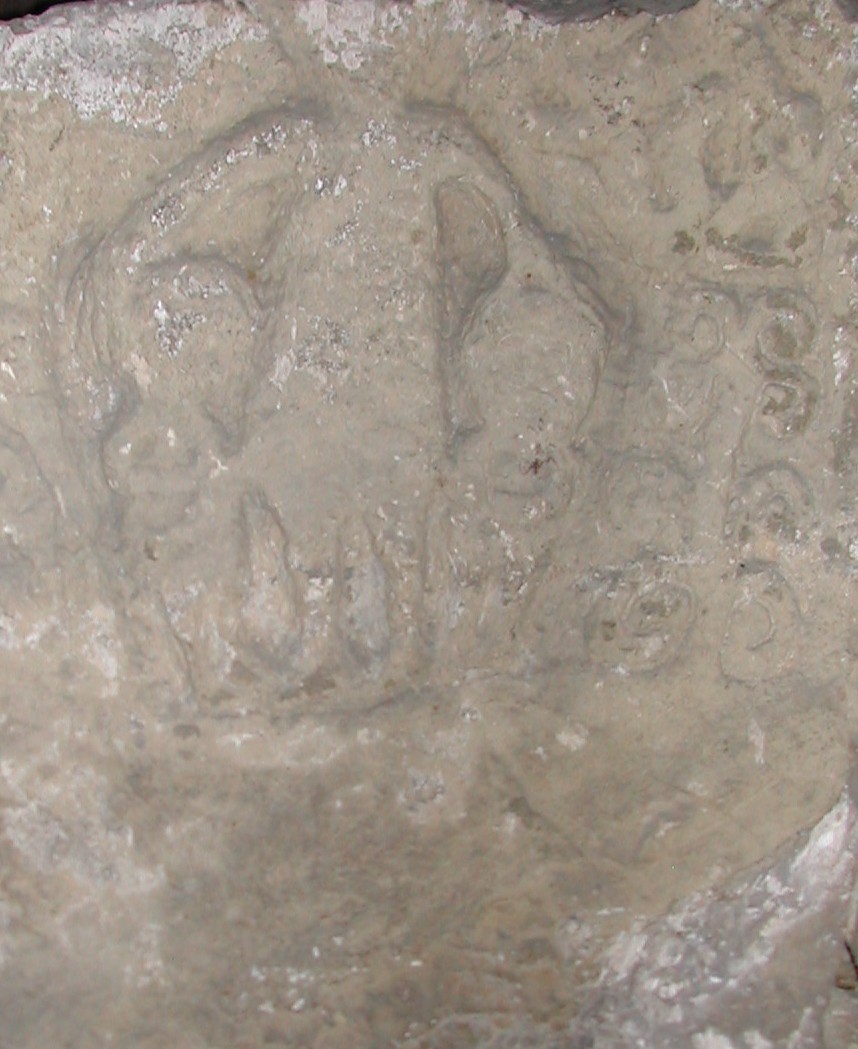
The stone depicting a central figure with its hands on the heads of two smaller figures.
| Belong to the period which intervened between the Danish wars and the Norman Conquest and were memorials of an ecclesiastical or secular ruler connected with the place or district. |

MARTIN TARPEY |